
Region 6: The Eastern Gulf of Thailand
(See bottom of post for links to more regions)
Of all the regions, the Eastern Gulf of Thailand has the largest number of islands with accommodation. Most islands are small, so it is easy to visit several islands in a short time. This region has a loyal following amongst travellers who seek tranquility and rugged, untouched nature.
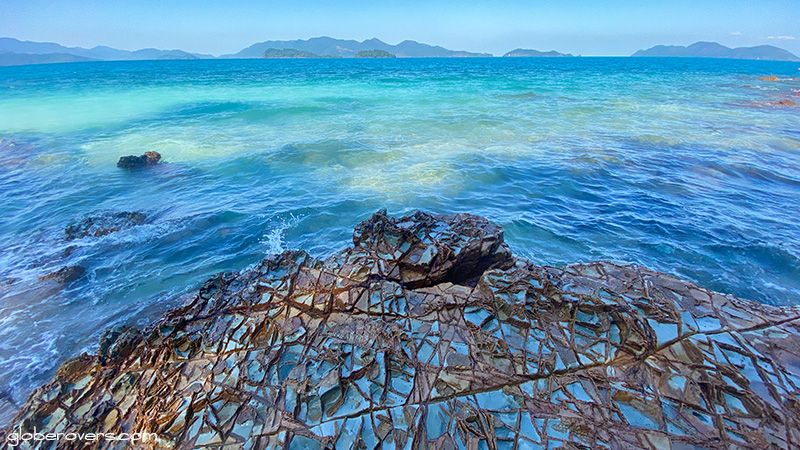
Table of Contents
Location & Gateway
On the eastern side of the Gulf of Thailand, west of Cambodia, this region stretches from Koh Kood (also written as Kut) in the south to Koh Chang in the north. While many of the islands have accommodation, only Koh Kood, Koh Mak and Koh Chang have a large variety of bungalows and resorts that can easily be booked online.
This region is filled with many small islands and unexplored beaches.
The other islands either have just one luxury resort or fairly basic bungalows that can only be booked by phone. Some islands are privately owned and offer accommodation but require a small entrance fee for day visitors. Others are Government owned and declared as national parks, and charge a higher entrance fee, especially for foreigners.
The main gateway to this region is the town of Trat where ferries depart from a few piers south of town. Ferries to the more southern islands leave from Bang Bao Pier at the south-western tip of Koh Chang, as well as from Laem Sok Pier some 26 kilometres (16 mi) south of Trat.
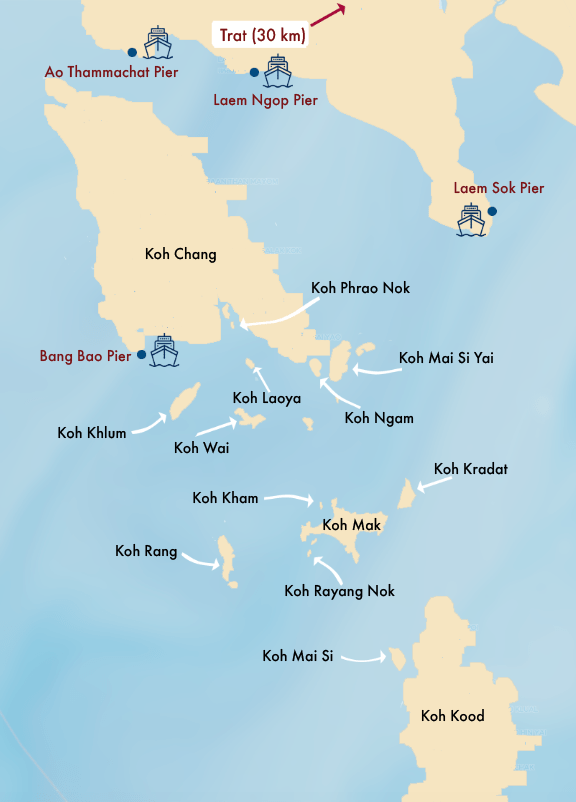
Notable Islands with Lodging
Tourism to this region is dominated by the two largest islands—Koh Chang in the north and to a lesser extent Koh Kood in the south. In between are several smaller islands with either basic or luxurious accommodation. Travelling from south to north, the islands with accommodation are:
1) Koh Kood and Koh Mai Si
Koh Kood, Thailand’s 6th largest island, easily makes it to the top of the list of Thailand’s most picturesque islands with its abundance of coconut-palm-fringed beaches, crystal clear water, laid-back atmosphere, hilly terrain, fishing villages, cascading waterfalls, hiking trails, lush jungles, river estuaries, and a variety of beach bungalows and luxury resorts. It is a long list of features for one island, but Koh Kood just has it all.
Due to its topography of jungle-clad mountains with massive trees, large parts of the island remain undeveloped and its wildlife is thriving. The island has about 12 named beaches, all competing for the top spot.
Koh Kood’s little satellite island, Koh Mai Si, is located about one kilometre to its north-west. Though the island is tiny, it has an 860-metre-long (2,821 ft) private airstrip to service the exclusive Soneva Kiri Resort from Bangkok’s Suvarnabhumi International Airport.
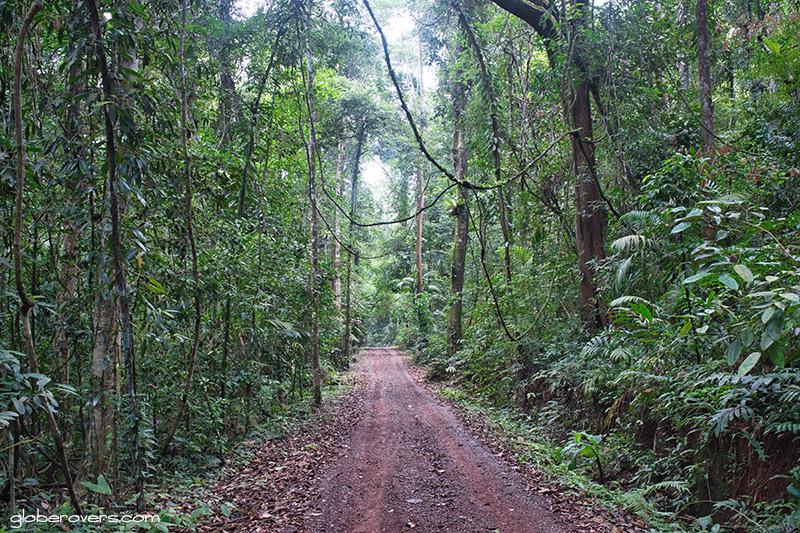
2) Koh Rang
Koh Rang, to the west of Koh Mak, has a National Parks ranger station situated in a beautiful sheltered bay near the northeastern part of the island. It is rumoured that a couple of bungalows will soon be available for tourists, along with a few tents and space to pitch your own tent. The small restaurant at the ranger station serves reasonable Thai food.
3) Koh Rayang Nok and Koh Rayang Nay
Koh Rayang Nok lies directly south-west of its uninhabited sister island, Koh Rayang Nay which is just off the western end of the much larger Koh Mak. This tiny island has a beautiful white sand beach at its northern tip close to a small wooden bridge that connects the island’s only accommodation, the Rayang Private Island Resort, to a rocky outcrop off the beach. The resort has just a few bungalows near the beach and on the hillside, as well as a restaurant and a small bar by the beach.
4) Koh Mak
Koh Mak, the third largest island in this region after Koh Chang and Koh Kood, is star-shaped, and measures 7.5 kilometres (4.7 mi) wide and 5.5. kilometres (3.4 mi) between its farthest ends. Due to its flat landscape, it is easy to travel around on its network of paved paths either by motorbike or bicycle.
Even though the island is under private ownership, there are several types of accommodation throughout the island, though more concentrated along its western beaches.

5) Koh Kham
Koh Kham lies immediately west of the northern arm of Koh Mak and measures a mere 500 metres (1,640 ft) by 260 metres (853 ft) at its widest point. The beach at the southern end with an east-stretching sandbank is the location of its only accommodation, the new exclusive Ananya Hideaway, a boutique resort which has been struggling to open due to legal disputes.
While it may not yet be possible to stay here, pay a small entrance fee (it is a privately owned island) and spend a day in paradise.
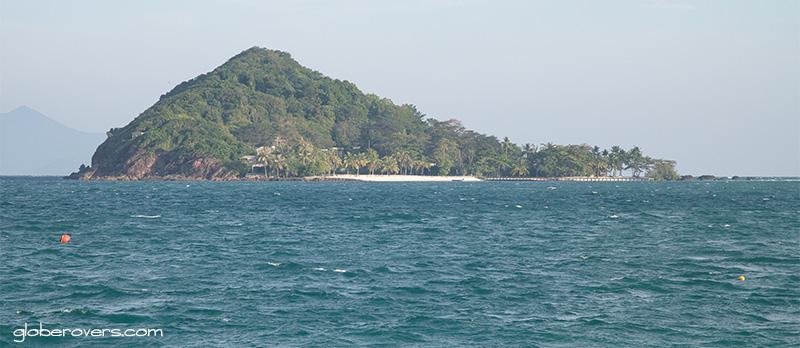
6) Koh Kradat
North-east of Koh Mak, Koh Kradat is flat with sparsely planted rubber trees and a hill at its centre. Measuring 2.6 kilometres (1.6 mi) along its longest end, it has a long white sand beach on its east coast. In addition to the lovely beach and great snorkelling, the island is known for its herd of deer which allow patient visitors to pet them. The private island’s only place to stay is the small Koh Kradat Resort.
7) Koh Wai
Koh Wai, a crescent-shaped island less than three kilometres (1.9 mi) long, is a laid-back paradise with no roads, no jetty, no village, and no electricity other than the generators run by a couple of basic resorts along its northern coast. Its biggest drawcard is postcard-beautiful beaches with clear waters. Snorkelling is good along the coral reefs at its north coast, close to where the most beautiful beach is located. Other than a few boatloads of day-trippers, mainly from Koh Chang, the island can accommodate only a handful of overnight visitors.

8) Koh Khlum
Koh Khlum is a four-kilometre-long (2.5 mi) island located just a few kilometres south of the Bang Bao Pier in the southern part of Koh Chang. The island’s best beach is at its northeastern tip and the only accommodation is the Koom Nangphaya Resort, offering a few bungalows, a restaurant, and a beach bar.
9) Koh Mai See Yai
Koh Mai See Yai is one of the largest islands in the Koh Chang Marine National Park though one of the least frequented due to the absence of outstanding beaches. However, it is worth visiting for the fishing village at its southern shore and a sea cave with a large colony of bats located at the southeast corner. There are ramshackle piers at the villages, some older basic resorts, a few homestays and a restaurant or two. It is an ideal place for a glimpse into the lives of the island’s fishing communities.
10) Koh Ngam
Located just over 200 metres (656 ft) from the Thantawan resort at the southeast tip of Koh Chang, lies Koh Ngam, meaning “beautiful island”. The island’s two rocky peaks bridged by a double-sided sandbar have gained it the moniker of the “Koh Phi Phi of the Gulf”. The matching crescent-shaped bays on both sides of the spit are scattered with palm trees. The island is under ongoing disputes between private owners and the Government’s National Parks so the only place to stay, the Analay Resort, has been closed since late 2019, although the National Parks may allow camping near the beach. The easiest way to get here is to rent a kayak from the Tantawan Resort on Koh Chang.

11) Koh Laoya
Just off Koh Chang’s large Salakphet Bay, past the islands of Phrao Nai and Phrao Nok, lie three islands referred to as Inner Laoya (Koh Laoya), Middle Laoya, and Lower Laoya Islands. Only the largest of the three, Koh Laoya has accommodation. The Laoya Coco Island Resort is on the eastern side along a white sand beach with crystal clear water.
12) Koh Phrao Nok
Koh Phrao Nok (Koh Sai Khao) lies at the entrance to Koh Chang’s Salakphet Bay and has white sandy beaches with clear water and many coconut trees. Its only accommodation, the Sai Khao White Sand Resort, seems to be deserted but it may come alive again in the near future. The beautiful island is well worth a visit.
13) Koh Chang
Koh Chang, meaning “elephant island”, is appropriately named for its elephant-shaped headland. It is Thailand’s third-largest island, and has been rapidly developed over the past few years so it now offers a mind-boggling number of resorts and restaurants, mostly along its west coast. Outside the built-up beaches on the west coast, hotels and guesthouses are generally small and family-run. The south coast offers quieter beaches, and while the east coast has few beaches, they do offer spectacular sunrises and tranquility.

The Unspoiled Beaches
This region is blessed with many beautiful islands and palm-fringed beaches. Some of the best beaches on islands with accommodation include:
1) Beaches of Koh Wai
Koh Wai’s almost three-kilometre-long (1.9 mi) north-east facing shore is alternated by rocks and palm-fringed white sand beaches with crystal clear turquoise waters. The long beach in front of the basic Koh Wai Paradise Resort is gorgeous, but for the most beautiful beach head to the far north-western tip of the island for a little slice of paradise. The beach here is mostly composed of tiny broken pieces of coral so even the small breaking waves remain clear of murky sediment.
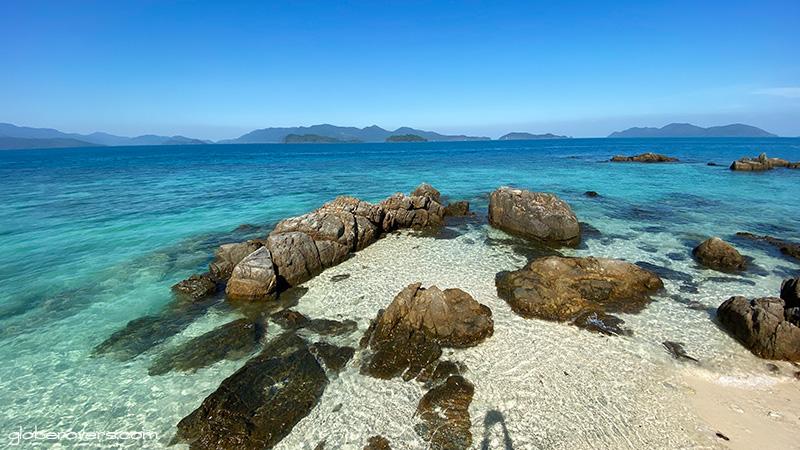
2) Ao Phrao, Koh Kood
Koh Kood is known for the beautiful beaches and clear water on its west side. The palm-tree lined Ao Phrao in the south, is the most impressive beach on the island. Just a few kilometres to the north lie two more idyllic spots, Ao Jark Bay and Klong Hin Beach.
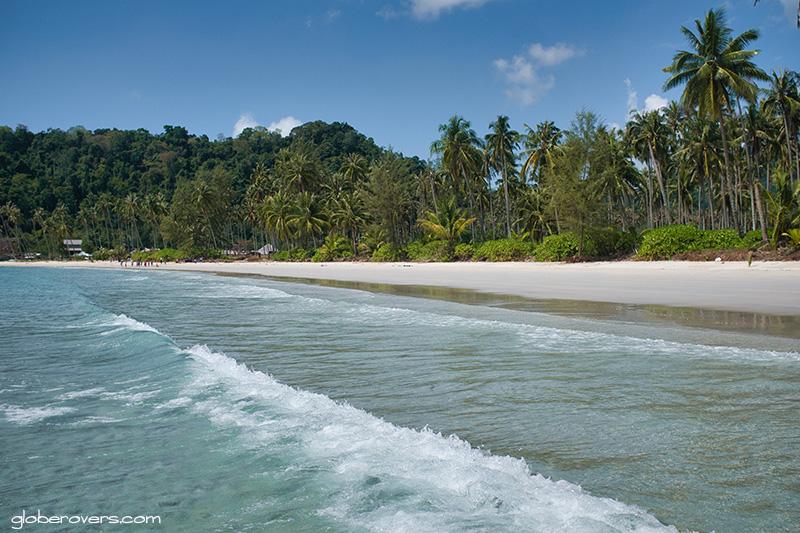
3) Haad Klong Kloi, Koh Chang
Koh Chang is similar to Koh Kood as the island is also blessed with many beautiful beaches along its western side. In the far south of the island, the beaches to the east and west of Haad Klong Kloi (1.6 km east of Bang Bao Pier) have fine views over the islands to the south.

4) The beaches of Koh Rang
Koh Rang’s beaches are located on the east side, with the best located at its northern and southern ends. The beach at its southeastern tip is arguably the finest. A Chinese shrine near the beach protects the sailors.
5) The Isthmus of Koh Ngam
Often referred to as “Koh Phi Phi of the Gulf”, the island has a narrow strip of land which joins two small island peaks with north and south-facing palm-fringed beaches. The beaches here are superb.

5) Islands without accommodation
The region has a smattering of small islands without accommodation and pristine beaches. Among these are Koh Kra to the north-east of Koh Rang and Koh Bai Dang to the east of Koh Wai.
Practical Information
Getting there: Passenger ferries to Koh Chang leave from the mainland at Laem Ngop ferry terminal, Centrepoint Pier, and Ao Thammachat which also has car ferries. Ferries to Koh Mak leave from nearby Krom Luang Pier near Laem Ngop, and from Laem Sok Pier on the Laem Sok Peninsula south of Trat.
To reach Koh Kood in the south, board a ferry at Laem Sok Pier. All other islands can be reached from Koh Chang, Koh Mak, and Koh Kood, or even direct from the nearest mainland pier.
Most of the smaller islands do not have scheduled ferries and are best reached on day trips by private long-tail or speedboat. Experienced kayakers can reach some islands from southern Koh Chang.
Getting around: The only island in this region served by a vehicle ferry is Koh Chang, though a bicycle or motorbike is the preferred choice for many visitors.
Both Koh Kood and Koh Mak have decent roads where a bicycle or motorbike can be rented. All the other islands are best explored on foot.
Sleep, eat and drink: Koh Chang has a bewildering array of accommodation, restaurants and beach bars, with fewer on Koh Kood and Koh Mak. The other islands with accommodation have minimal options, and some resorts may no longer be open for business due to Covid-19.
Accommodation on the smaller islands is also less likely to be bookable online so it’s best to call ahead with the help of a Thai language speaker.

Links to all island regions of Thailand
Overview and map of Thailand’s Islands
Region 1: Southern Andaman (Koh Lipe area)
Region 2: Lower Central Andaman (Koh Mook area)
Region 3: Upper Central Andaman (Koh Lanta area)
Region 4: Northern Andaman (Koh Phayam area)
Region 5: Central Gulf of Thailand (Koh Samui area)
Region 6: Eastern Gulf of Thailand (Koh Chang area) – YOU ARE HERE
Region 7: Northern Gulf of Thailand (Koh Samet area)
The 10 Best Beaches on Thailand’s Islands
Notes when reading the details in each region
- In the Thai language, “koh” means “island”, so the correct way to refer to the island of Phuket, for example, is “Koh Phuket” rather than “Koh Phuket Island”. “Ao” means “beach”, so “Ao Nang” means “Nang Beach”. “Mu koh” means “archipelago”, so “Mu Koh Ang Thong” means “Ang Thong Archipelago” .
- Some of Thailand’s islands have the same or similar names. Some examples include Koh Chang in the Gulf of Thailand, and Koh Chang Noi along the northern Andaman Coast; and Koh Ngam Yai and Koh Ngam Noi near the town of Chumphon, which is far from Koh Ngam at the southeastern tip of Koh Chang near Cambodia.
- Covid-19 is decimating the tourist infrastructure on Thailand’s islands. Most tourist services, including accommodation and transport services, available pre-Covid are not currently accessible, and may not be restored for a while.
- While some islands can be reached by public ferries, speedboats and long-tail boats, some are only accessible by private boat rental.
- Much effort has been made to provide information that is as accurate as possible, but please do your own extensive research to get the latest information.
- This article focuses on the best beaches on islands with accommodation, though islands managed by the National Parks offering tents for rent are also included. We also include noteworthy islands and beaches of interest with no accommodation.
- This article is not intended as a comprehensive guide to all islands of Thailand.
☛ Read more: Blog posts of Thailand

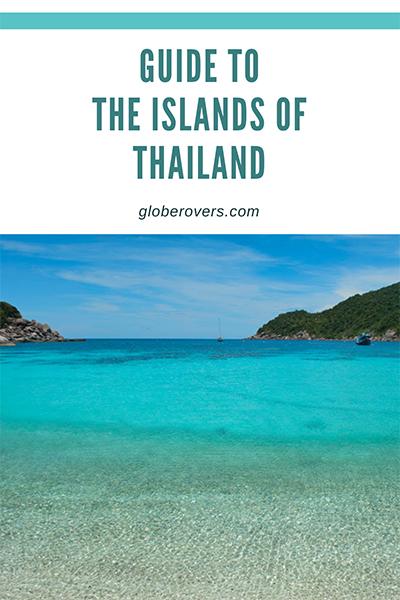
Additional Reading
CNN Traveler: The 11 best islands in Thailand
Top 10 Best Thai Islands that need to be on your bucket list

Blog post and photos by Peter who has been travelling almost full-time since 2005 and has been to over 122 countries. He visited several countries, such as Japan, more than 20 times. Peter is Editor-in-Chief and Publisher of GlobeRovers Magazine, an independent travel magazine focused on intrepid destinations.
